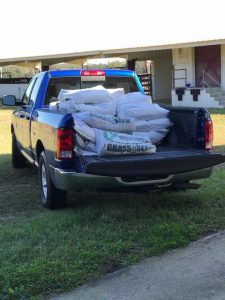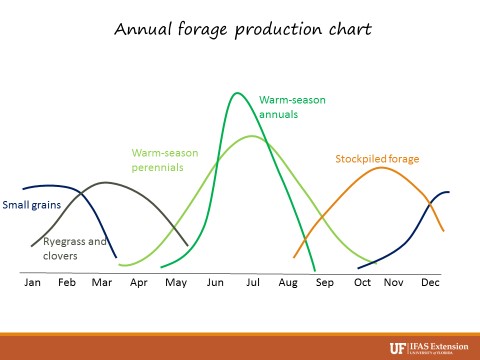 August is typically the hottest month of the year in Florida so it may seem crazy to be planning for the cool-season. But now is definitely the time to finalize your winter grazing plan. Maintaining a successful operation no matter your enterprise – cattle, horses, sheep or goats – relies heavily on developing a year-round forage system. Cool-season forages such as small grains (rye, oat, triticale, and wheat), clovers, and ryegrasses allow us to bridge the forage availability gap during times of the year when our perennial crop (often bahiagrass or bermudagrass) becomes dormant due to unfavorable growing conditions.
August is typically the hottest month of the year in Florida so it may seem crazy to be planning for the cool-season. But now is definitely the time to finalize your winter grazing plan. Maintaining a successful operation no matter your enterprise – cattle, horses, sheep or goats – relies heavily on developing a year-round forage system. Cool-season forages such as small grains (rye, oat, triticale, and wheat), clovers, and ryegrasses allow us to bridge the forage availability gap during times of the year when our perennial crop (often bahiagrass or bermudagrass) becomes dormant due to unfavorable growing conditions.
Forage Planting Strategies
Devise a planting strategy that makes the most sense for your operation. Take into account the topography barriers your property offers. Certain forages will perform better in wet areas and some will absolutely not perform in wet soils and require well-drained areas. Spend time consulting with your local extension agent about available options as well as evaluating the Cool Season Forage Variety Recommendations EDIS publication found here: http://edis.ifas.ufl.edu/aa266
Recommended planting dates are October through mid-November. This does not mean wait to buy the seed you wish to plant until the beginning of October. Plan to purchase your seed in early September to be sure you can find the varieties you want. Pay close attention to the weather pattern and don’t feel forced to plant if there is no rain in the forecast. Planting later than mid-November is okay. It just means that the planted forage will come up a little later. It’s better to have delayed grazing because you waited for some rain than no grazing because the seeds did not germinate.

Remember that the existing crop becomes competition for the cool-season forages you are trying to establish. Planting too early can result in competition if no-till drilling without disturbing the ground, as the perennial grass is still experiencing favorable growing conditions making it difficult for anything to out-compete. The more prepared the seed bed is the more total yield and overall success you can expect from the cool-season forages.
Species Selection
Farmers know better than to put all their eggs in one basket. Create options for yourself and for your winter grazing. Unless you devise a forage stockpiling strategy winter grazing will be crucial. Select species that will complement each other and provide quality forage over the longest period of time. As a general example; a cool-season mix of a small grain, a clover, and a ryegrass allows for the winter forage gap to become minimized. The small grain will produce first, and once that has played out the clover will make its appearance. The ryegrass will emerge a little later in the season, which if managed properly can extend the grazing season into May. Then the perennial grasses will begin their growth.
 0
0
